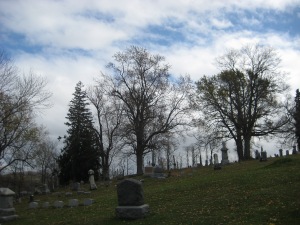 Graveyards are so filled with life.
Graveyards are so filled with life.
They’re perfect places to study the natural world. They’ve got lots of trees. Lots of birds. Not a lot of traffic. And they’re certainly quiet.
The grass is usually well-mowed, true, but at least in a country graveyard like this, the grass is herbicide-free and filled with a pleasing diversity of plants.
And a graveyard seems like an appropriately eerie place to find a creeper.
Just on the edge of a blacktopped path, there’s an edging of plants with three jaggedly-toothed leaflets. Not poison ivy, which never has saw-toothed leaves, but another plant–much more popular. Wild strawberries.
No fruit, of course, not on a chilly November afternoon. But the strawberries have bright red stems stretching out sideways, across the path and over the lawn.
No, not stretching–creeping.
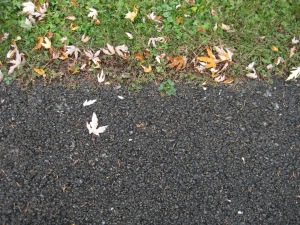 The creeping lifestyle is an excellent adaptation for survival, especially in lawns, a crowded habitat where the competition is fierce. A creeping plant is rooted to one spot, but can exploit a lot of additional territory by sending out runners.
The creeping lifestyle is an excellent adaptation for survival, especially in lawns, a crowded habitat where the competition is fierce. A creeping plant is rooted to one spot, but can exploit a lot of additional territory by sending out runners.
Botanically speaking, runners are a type of stolon, or horizontal stem. The runners can put out roots from nodes spaced at intervals along its length. 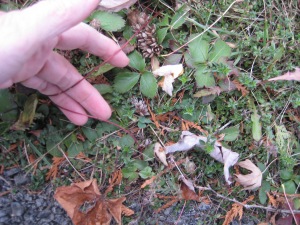 When these new roots touch soil, they dig in and eventually send up leaves—they create a clone of the mother plant. Once the new plant is established, the runner, no longer needed, dries up and falls off. Sort of like an umbilical cord. Now there are two independent plants instead of one.
When these new roots touch soil, they dig in and eventually send up leaves—they create a clone of the mother plant. Once the new plant is established, the runner, no longer needed, dries up and falls off. Sort of like an umbilical cord. Now there are two independent plants instead of one.
Then it happens all over again. The clone clones, and then the clones clone again. Till the whole graveyard is riddled with strawberry plants.
 The strawberry runners leapfrog over grass and clover to reach for more sunlight or more water or more space. Strawberries are running and creeping and twining all through the grass here.
The strawberry runners leapfrog over grass and clover to reach for more sunlight or more water or more space. Strawberries are running and creeping and twining all through the grass here.
Wild strawberries. So much life and potential sweetness in a graveyard.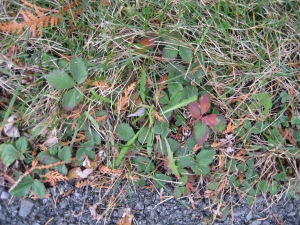

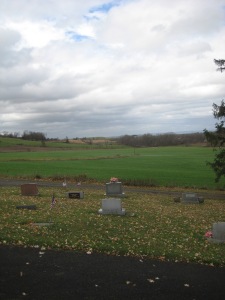




Recent Comments